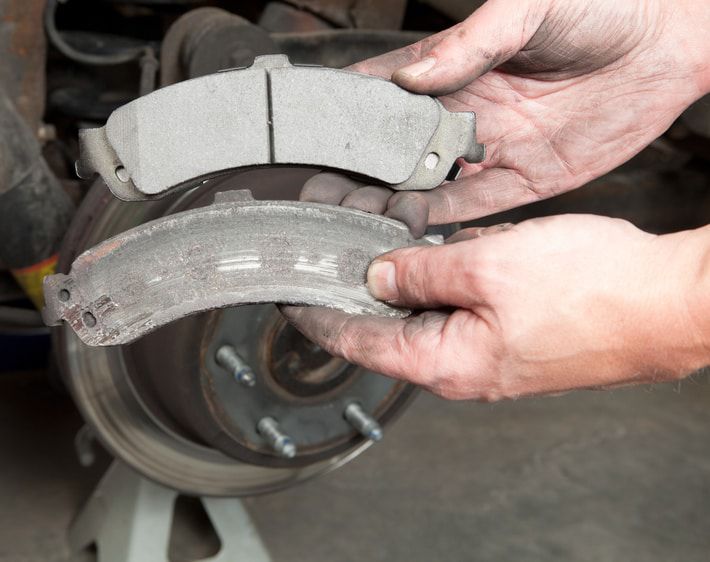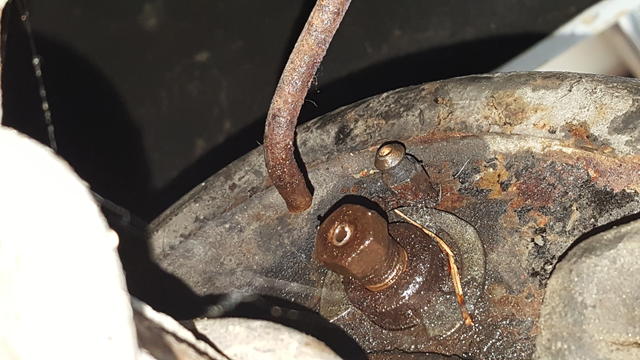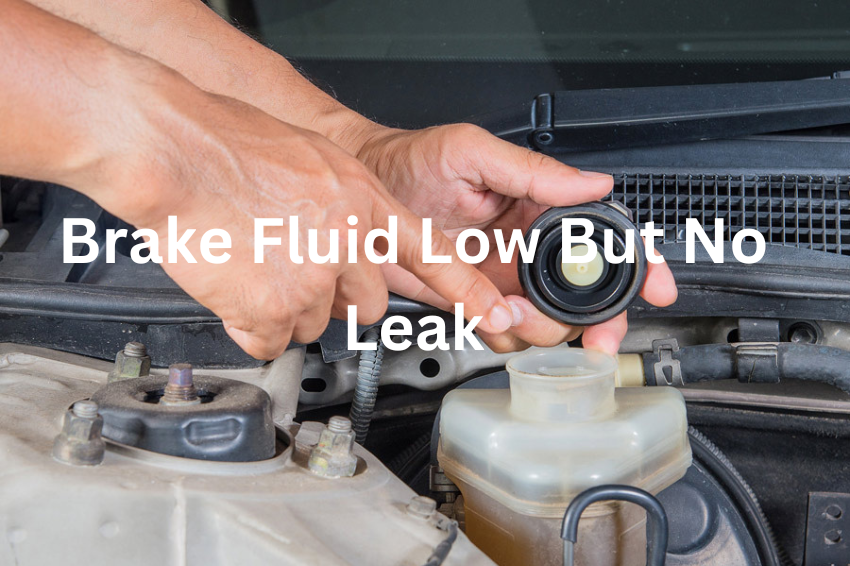A low brake fluid reservoir can be alarming, especially when there aren’t any leaks.
This guide clarifies the reasons behind this issue and offers actionable steps to get your car’s braking system back in top shape, ensuring your safety on the road.
Why Is My Brake Fluid Low If There’s No Leak?
It’s alarming to see your car’s brake fluid reservoir low when there aren’t any visible leaks.
While leaks are the usual reason, other mechanisms can explain this situation.
Here’s a breakdown of the main reasons:

- Worn Brake Pads: This is the most common reason for low brake fluid without external leaks. As brake pads wear down due to use, the caliper piston needs to push out further to maintain contact with the brake disc. This extension requires more brake fluid, causing the reservoir level to drop.
- Internal Leaks: Although less frequent, internal leaks within the brake system components can also deplete the fluid. These leaks can occur in the brake caliper piston or the brake booster. A faulty seal or worn internal parts might allow fluid to bypass its intended path, causing a decrease in the reservoir.

- Damaged Brake Lines (internal): In rare instances, the brake lines, which are the tubes carrying fluid throughout the system, might develop internal damage. This hidden damage can cause a slow leak that gradually reduces the brake fluid level in the reservoir.
Imagine a simple hydraulic system like a syringe.
When you press the plunger (like pressing the brake pedal), fluid moves within a closed system to create pressure.
In your car’s brake system, the brake fluid acts similarly.
As the brake pads wear, the caliper piston pushes further out, similar to how you push the syringe plunger further when its content is depleted.
This movement requires more fluid, explaining the drop in the reservoir level.
Even with this explanation, it’s important to not attempt a DIY diagnosis or fix unless you’re a skilled mechanic.
A qualified professional can properly inspect the brake system and pinpoint the exact reason for the low fluid level.
Is Driving Safe With Low Brake Fluid?
No, driving with low brake fluid is absolutely not safe.
Your car’s braking system relies on brake fluid to function properly.
When the fluid level is low, it significantly compromises your ability to stop the car effectively.
If you suspect low brake fluid, do not drive your car.
Schedule an appointment with a mechanic as soon as possible.
They can safely inspect the brake system, identify the cause of the low fluid, and perform any necessary repairs.
Driving with low brake fluid is simply not worth the risk.
What Happens If I Don’t Address Low Brake Fluid (Even Without A Leak)?
Driving with low brake fluid is a gamble with your safety.
While it might seem okay initially, the consequences worsen over time.
Here’s why neglecting low brake fluid is a serious risk:
- Decreased Braking Performance: As mentioned earlier, brake fluid plays an essential role in transmitting pressure from the brake pedal to the wheels. Low fluid translates to less pressure, meaning your brakes won’t be as effective. This can increase your stopping distance, especially in critical situations.
- Risk of Spongy Brake Pedal: With continued low fluid levels, air can enter the brake lines. This air creates a spongy feeling when you press the brake pedal. A mushy pedal not only makes it harder to judge braking force but also indicates a potential system failure on the horizon.
- Potential Brake Failure: In the worst-case scenario, completely neglecting low brake fluid can lead to complete brake failure. This could happen due to air bubbles in the lines or internal damage caused by excessive wear. A brake failure essentially means you lose control over stopping the car, posing an extreme danger to yourself and others.
- Additional Car Damage: Besides the immediate safety risk, neglecting low brake fluid can also lead to internal damage within the brake system. Components like the brake caliper or master cylinder can become stressed due to the lack of proper fluid pressure. These repairs can be significantly more expensive than addressing the low fluid level in the first place.
Steps For Low Brake Fluid With No Visible Leaks
Discovering low brake fluid with no visible leaks can be concerning.
Here are some crucial steps to prioritize your safety and ensure your car receives proper attention:
- Do Not Drive Your Car: This is the most important step. Low brake fluid significantly compromises your braking performance. Driving in this condition is extremely dangerous and can lead to accidents. It’s best to err on the side of caution and avoid driving the car at all.
- Schedule an Appointment with a Qualified Mechanic As Soon As Possible: A professional mechanic has the expertise and tools to safely inspect your brake system. They can identify the underlying cause of the low fluid level, even if there are no external leaks. This could involve internal leaks, worn brake pads, or a failing brake component.
- Resist the Urge to Add Brake Fluid Yourself: It might seem like a quick fix, but adding brake fluid without addressing the root cause can be dangerous. The low fluid level is a symptom of a deeper problem. Adding fluid without proper diagnosis could mask the issue and potentially lead to further complications.
- If You Notice Warning Signs, Consider Towing Your Car: If you experience a spongy brake pedal or a significant increase in stopping distance alongside low brake fluid, it’s best to call a tow truck to transport your car to a mechanic. These warning signs indicate a more urgent issue that requires immediate professional attention.
- Schedule Regular Brake System Maintenance: Regular brake inspections are vital for maintaining your car’s safety. A mechanic can check the fluid level, inspect for wear and tear, and identify any potential problems before they become serious.
By following these steps, you can address the low brake fluid issue effectively and ensure your car’s braking system functions safely and optimally.
Note: While car models may have slight variations in brake fluid reservoir locations or indicator lights, the overall steps mentioned above apply to most vehicles.
Reference Sources:
National Highway Traffic Safety Administration (NHTSA)
